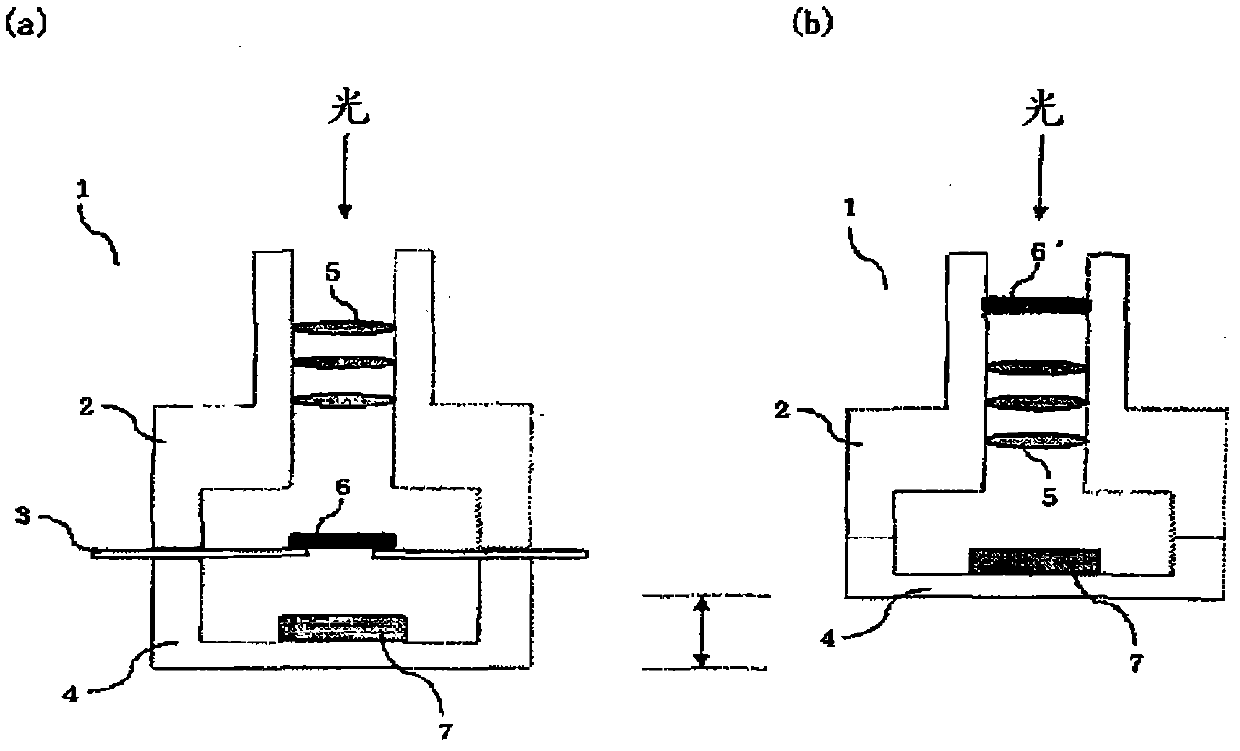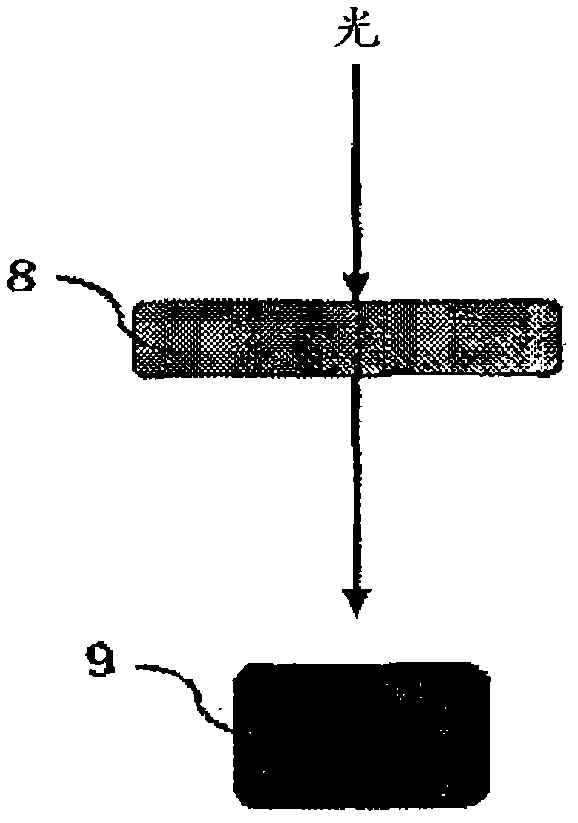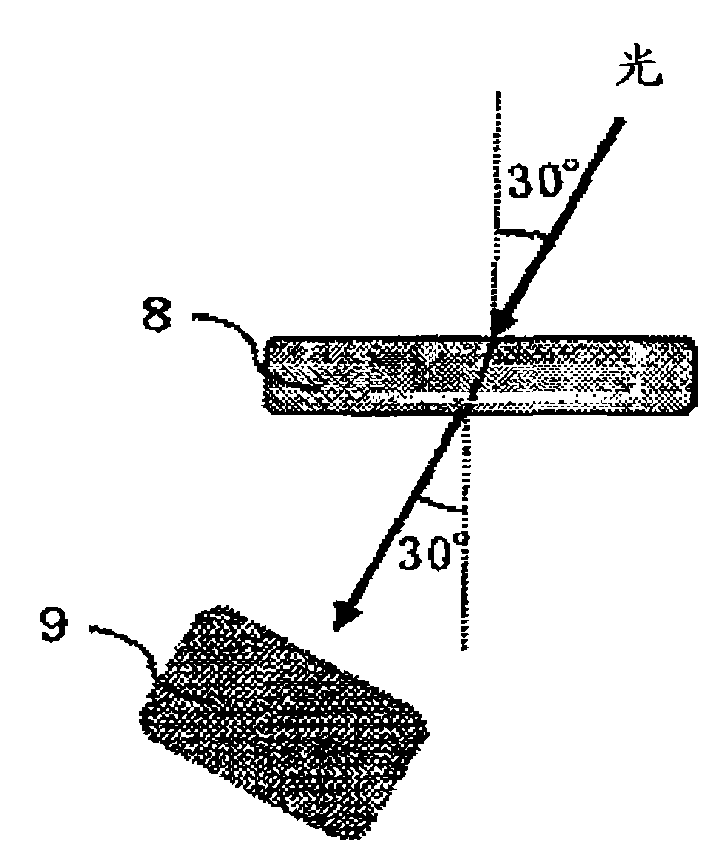Near-infrared cut filter and device using near-infrared cut filter
A cut-off filter and near-infrared technology, which is applied to optics, optical components, camera bodies, etc., can solve the problem that the absorption capacity of near-infrared rays is not necessarily sufficient
- Summary
- Abstract
- Description
- Claims
- Application Information
AI Technical Summary
Problems solved by technology
Method used
Image
Examples
Embodiment
[0545] Hereinafter, the present invention will be described with reference to examples, but the present invention is not limited by these examples at all. It should be noted that "part" means "part by weight" unless otherwise specified.
[0546] First, the measurement method of each physical property value and the evaluation method of physical property are demonstrated.
[0547] (1) Molecular weight:
[0548]Using a gel permeation chromatography (GPC) apparatus (150C type) manufactured by WATERS, equipped with an H-type column manufactured by TOSOH, the standard polystyrene conversion was measured under the conditions of o-dichlorobenzene solvent and 120°C. The weight average molecular weight (Mw) and number average molecular weight (Mn) of .
[0549] (2) Glass transition temperature (Tg):
[0550] The measurement was performed using a differential scanning calorimeter (DSC6200) manufactured by SII NanoTechnology Co., Ltd. at a temperature increase rate of 20° C. per minute...
Synthetic example 1
[0559] 8-methyl-8-methoxycarbonyltetracyclo[4.4.0.1 represented by the following formula (a) 2,5 .1 7,10 ] 100 parts of dodec-3-ene (hereinafter also referred to as "DNM"), 18 parts of 1-hexene (molecular weight regulator), and 300 parts of toluene (solvent for ring-opening polymerization) were put into the reaction after nitrogen replacement In a vessel, the solution was heated to 80°C. Next, 0.2 part of a toluene solution (0.6 mol / L) of triethylaluminum as a polymerization catalyst and 0.9 part of a toluene solution (concentration: 0.025 mol / L) of methanol-modified tungsten hexachloride were added to the solution in the reaction vessel. , and the solution was heated and stirred at 80° C. for 3 hours to perform a ring-opening polymerization reaction to obtain a ring-opening polymer solution. The polymerization conversion rate of this polymerization reaction was 97%.
[0560]
[0561] 1000 parts of the thus obtained ring-opening polymer solution was put into an autoclave...
Synthetic example 2
[0564] 420.4 g of dehydrated cyclohexane with a moisture content of 6 ppm, 180.2 g of p-xylene, and 5-trimethoxysilyl-bicyclo[2.2.1]heptane- 48.75 mmol (10.43 g) of 2-ene and 1425 mmol (134.1 g) of bicyclo[2.2.1]hept-2-ene were added, and gaseous ethylene was added to adjust the inner pressure of the autoclave to 0.1 MPa. After that, the autoclave was heated to 75°C.
[0565] 0.003 mg atom of palladium 2-ethylhexanoate (as a Pd atom) as a catalyst component and 0.0015 mmol of tricyclohexylphosphine were added to 10 ml of toluene and reacted at 25°C for 1 hour to prepare a solution. Fluorophenylboronic acid triphenylcarbon 0.00315 mmol was added to the autoclave heated to 75°C in this order to start the polymerization.
[0566] 90 minutes after the start of polymerization, 11.25 mmol (2.41 g) was added, and then 7.5 mmol (1.61 g), 3.75 mmol (0.80 g), and 3.75 mmol were added 4 times every 30 minutes. 5-Trimethoxysilyl-bicyclo[2.2.1]hept-2-ene was added.
[0567] After the ...
PUM
| Property | Measurement | Unit |
|---|---|---|
| Glass transition temperature | aaaaa | aaaaa |
| Glass transition temperature | aaaaa | aaaaa |
| Glass transition temperature | aaaaa | aaaaa |
Abstract
Description
Claims
Application Information
 Login to View More
Login to View More - R&D
- Intellectual Property
- Life Sciences
- Materials
- Tech Scout
- Unparalleled Data Quality
- Higher Quality Content
- 60% Fewer Hallucinations
Browse by: Latest US Patents, China's latest patents, Technical Efficacy Thesaurus, Application Domain, Technology Topic, Popular Technical Reports.
© 2025 PatSnap. All rights reserved.Legal|Privacy policy|Modern Slavery Act Transparency Statement|Sitemap|About US| Contact US: help@patsnap.com



